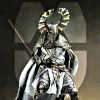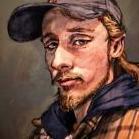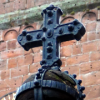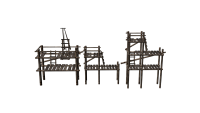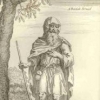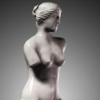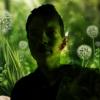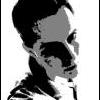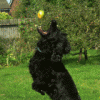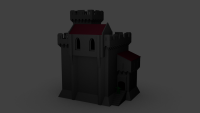Leaderboard
Popular Content
Showing content with the highest reputation on 2014-02-26 in all areas
-
2 points
-
What I want to know is how to exclude unit properties and civs from loading. For example: The viking female unit shouldn't be able to build farmsteads because the house already functions that way, still other civs do have to build it. How do I exclude parts the parent template from loading? Other: How do I exclude already existing civs from loading when I start a mod?1 point
-
Have started making a massive map thanks to height-maps being able to create bigger-than-giant maps. EDIT: Most recent images posted @ 11:46pm 1st Feb1 point
-
Is there a possibility that Hans can make it to the game? I'd love that. Ayakashi, I'm jelly at your drawings! I wish I can reach that kind of abillity someday.1 point
-
We will definitely require your expertise. @stansislas I think his first question was who makes decisions? Because this is a council, I'd like to see decisions being made all amicably as though we were at a roundtable. Suggestions, ideas, comments, etc, will all be debated on, and then if everyone comes to an agreement, we execute those presentations accordingly. @Lion.Kanzen If you want to design us a logo, I'm thinking a nice wooden round table with the 0 A.D. Logo on it. With circular text "The Modders Council of 0 A.D. ( TMC0AD)1 point
-
Are you talking about javelinist in towers? Or ontop an elephant? I think via JavaScript you could decide yourself which unit to attack. So compare the nearest enemy position to your units position and decide whether the javelins' reach is enough. Once the enemies are coming too close draw back the javelinists and send in the melee. (all in javascript)1 point
-
That's probably the best that can happen to 0 A.D. other than all RTS and RPG genres suddenly going open source or giving their art and dev departments at our service. So seen realistically, I thank you for setting this up. Me probably am the one that is responsible for the confusion due to my initial post. Thanks for clarifying. So, of course I offer my bow as a help if you wish.1 point
-
I've increased their armor a little bit to compensate. The real strength of the Gaesata is in raiding and quick strikes. They are quicker than other champion spearmen for this purposes. They also are good against even ranged cavalry since they can catch them easier than more heavily armored spearmen. You just need to use them differently than other spearmen. They were never meant to be front-line meat shield-style troops.1 point
-
I need some thoughts on the best way to implement supplies. First a question: Should the stats be restored (in case of hitpoints) if the unit moves into a supply range, or should the unit keep the degenerated values unless he is being healed by a healer? Currently I see two ways of implementing supplies: 1. All units (at least all unit who are going to be dependent on supplies) receive a initial degeneration value of hitpoints. This is being prevented by moving the unit in own/ally territory or a supply range (from supply carts etc.) pros: relatively easy to implement I guess. cons: Not really flexible: only possible to change hitpoints, 2. No initial degeneration value. Units receive a decay effect when they move out of own/ally territory into neutral/enemy. pros: flexible: not only hitpoints can be changed, also armor/attack and other unit stats. cons: Hard to create a degeneration effect and harder to implement. Other than that: How do I create a new tag in a XML-file (okay, that is not so hard) and make sure that it gets readed in the JS-script(That is my actual question)? A stated above supply carts will be created, possible extensions might include limiting the amount of supply a cart can offer (the rate is determined by the amount of supply requiring soldiers in range) and create supply lines by creating additional units who are capable of gathering supplies at certain buildings/places and then moving it to the supply cart. It also enables some additional strategic features in battle. (think of your soldiers destroying the other cart and that way making sure that the stats of the enemies' soldiers are lowered and therefore get easily beaten if there is no other supply giver available. In case of supply lines it is also needed to watch your rear and intercept eventual raiders trying to starve your army)1 point
-
That's right. By posting or broadcasting a message. Posting sends it to a specific entity. Broadcasting sends it to everything that listens (every entity that has a component with the right On... method).See AuraManager.js:49 Or if you use the AruaManager for the caching, you can also use it to send the messages I guess. Via the rangemanager component. In the rangemanager, you can register a query, and it will advertise any changes to the right entity (via the OnRangeUpdate message).See Auras.js:130 and 201 Euh, Every script in the simulation directory is ran on the start of the game. This means, for normal components, that the functions are initialised at that point. To use the functions, it needs to be called by other functions, or listen to messages. I mean in simulation/helpers/ValueModification.js. That file just contains 3 functions that are used to call the technologies and aura modifications. Including yours there isn't that hard.1 point
-
With some help of sanderd17 I managed to implement the C++ part. Edit: Some little code changes Edit(2): and some more... TerritoryMessages.patch1 point
-
Yes, and the definition of the message http://trac.wildfiregames.com/browser/ps/trunk/source/simulation2/MessageTypes.h I think it's all what's needed. Then in the JS components, you can just listen to the message by implementing the On... method (like OnPositionChanged for the PositionChanged message). And of course, the arguments of the PositionChanged message are the new position (that's the data that gets send with the message), while your data should be the old and the new territory.1 point
-
Awesome looking map I bet it would help to be able to brush clumps of trees and whatnot, instead of placing them individually? Maybe I will find inspiration to reapproach the patch I was working on for that...1 point
-
This is definitely going to take some time. BTW if anyone wants to have a play around with what I have so far here's the files: http://websudoku.co.nz/downloads/map001.zip For best results (as you see in my pics) you'll need to turn on all the optional graphics enhancements. Otherwise it will look a bit lame. Here's how: http://trac.wildfiregames.com/wiki/Manual_Settings1 point
-
Ptolemaic mercenary camp. Realtime capture with baked normalized AO. (it will be less dark ingame). White cloth is playercolor. Sightly bigger than a barracks, but smaller than a fortress/roman army camp.1 point
-
This looks really good. You should work with the team to make more maps for official releases and to improve the existing ones.1 point
-
1 point
-
GIMP will work fine for textures as long as you understand what is happening. The issue is that the game does the player colour in an unusual way. What I think you are expecting to happen is to have a background of the player colour with the texture over the top so the player colour shows through in the alpha sections. It works slightly differently though. First with images you need to understand that each pixel in the image has 4 channels. 3 colours (red, green, blue) and the alpha or transparency channel. When you make part of the image transparent you only change the alpha channel, the colour components stay exactly the same. To see this in gimp you can use the layer mask as Enrique mentioned to show the alpha channel as a black and white image. You can disable the layer mask (from the right click menu of the layer) to see what the image looks like without the alpha channel. Now what 0 A.D. does with the player colour to create the final texture: 1. Multiply the texture by the player colour and discard the alpha channel. So if the player colour is white then the image will be left as it was (multiplying by 1 leaves things unchanged). If the player colour is black the whole image will become black, if it is blue then the image will become blueish. You can test the multiply in gimp using layer modes, just create a layer with the player colour and set the mode to multiply. 2. Take the original texture with the alpha channel and place it on top of the new multiplied image. Then the multiplied image will show through in the transparent regions giving the final texture. You can replicate this in gimp to preview what your texture will look like. 1. Open the texture, there should be a single layer. 2. Duplicate the layer. 3. Remove the alpha channel from the bottom layer. (Now you can see the colours "underneath" the transparent sections). 4. Create a new layer and put it in between the two existing layers. 5. Fill the new layer with the player colour (e.g. #0000FF for blue players). 6. Set the mode of the new layer to multiply. Now you should see an image which will look like the final texture in game. So it is important that you are aware of what the image is like "underneath" the transparent areas because it will affect what the texture looks like. This is why layer masks are useful so you can easily disable the transparency and see the colours in the transparent areas. (create the layer mask using the "Transfer layers alpha channel" option).1 point
-
I'm talking about the hardness 100 brush hardness 50 will give you variable opacity on your edges, which could be causing problems1 point
-
Some pen dynamics work with opacity too. Pressure opacity with a hard edge brush is pretty reliable1 point
-
I see you're using GIMP. I had also a lot of trouble with alphas before in GIMP. It's kind of weird how GIMP handles transparencies. The correct way to show the playercolor without the weird borderline is using masks layers. Just rightclick your texture layer, add mask (white, full opacity) and paint there in black where you want the playercolor to show. Try exporting that as .png and see if is fixed. Your other problem about erasing and the texture still partially showing is weird. I have no Idea why is doing that. Are you sure your eraser opacity was at 100%?1 point
-
Actualy the Gravensteen looks like a "germanic" (by germanic I mean all people with a germanic culture, not people living in germany...) castle. the ones in my country are also germanic. I prefer to make an anti-symetric design : and it uses less tris... (not yet finished) I'm french, that's why I asked, for me "donjon" in english is "keep" but as you wrote "donjon" and "dungeon" are false friends... sometime I also heard "keep" in french translated to "la garde" (in english would means "the castle/keep/building/tower used to protect/hold a strategic point") but I'm convinced this is a mistake meaning... whatever thx for you coment1 point
-
I have several ideas of some economic systems. One I would like to test : the player buys some wood at the market, then somewhere (need to define some spots...) a neutral merchant is spawned and goes to the castle. If the enemy kills and loots your merchant, you'll get a message to warn you that the merchant has been killed... But I don't want to say I will add this idea, because I really need to write some scripts to have a better idea, and see what is possible... I don't want to change the system just for changing it, to be honest I never really liked managing tons of peasants... I would like the player not be annoyed by managing peasants. I want the player put on the ground all walls, towers etc. and the rate of construction depends of the number of builders. By builders, for now, I mean peasants. But in the further I would like something a bit more complex, with masters carpenters / stone carvers etc. I guess I will do the same for foods. Trees can obstruct needed space, I have to think how to cut the trees...1 point

